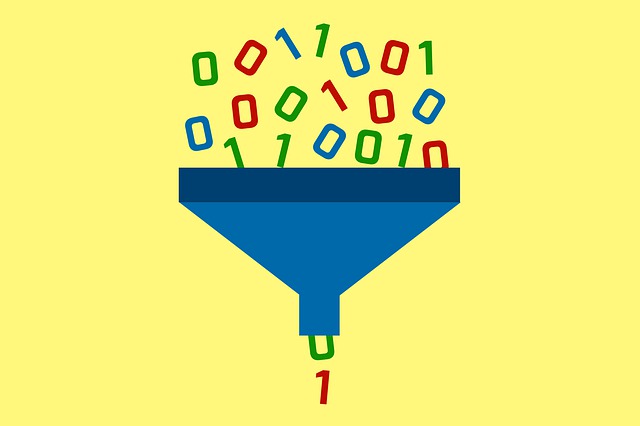
Business Leaders Expect Low-Code to Surpass Traditional Coding by 2024
- Low-code adoption rose from 77% in 2021 to 94% in the “Mendix 2022 State of Low-Code in Key Verticals” including financial services, insurance, retail, public sector, and manufacturing
- 69% of respondents said low-code has evolved from a crisis technology to a core technology
- One in nine businesses would have failed during the pandemic if they hadn’t made technology changes, including low-code
- Nearly 40% of respondents are using low-code for mission-critical solutions
BOSTON, Sept. 29, 2022 /PRNewswire/ — Mendix, a Siemens business and global leader in modern enterprise application development, today announced the results of its “2022 State of Low-Code in Key Verticals” survey, which shows that most organizations expect to use low-code more than traditional coding by 2024. In line with that, Gartner estimates that, by 2025, 70% of applications developed by enterprises will be built with low-code or no-code technologies, up from less than 25% in 2020.
Related Documents
Mendix 2022 State of Low-Code in Key Verticals
The report also shows that low-code has evolved from a crisis technology during the pandemic to a core technology today in 69% of respondent organizations. Nearly all (94%) of these companies use low-code, up from 77% in 2021.
The survey, which was commissioned by Mendix and conducted by research consultancy Reputation Leaders, captures the experiences, observations, and opinions of business leaders in France, Germany, the Netherlands, the UK, and the U.S. who work in the banking, financial services, insurance, public sector, industrial manufacturing, and retail sectors. The survey was fielded from June 8 through June 20, 2022.
“The way we run our businesses has fundamentally changed in the last two years. It is now absolutely critical to digitalize operations and engage with customers and employees through different modalities and touchpoints,” said Tim Srock, CEO of Mendix. “At the same time, growing technology complexity and the accelerating speed of business necessitate the use of low-code to ensure that delivering business value is technologically possible and can be achieved in a fast and agile way.”
General trends
Today’s companies use low-code as the foundation for digital transformation. Because such technology purchases are considered strategic, they are now being driven by the C-suite, including CEOs, CIOs, and chief digital officers. About 70% of survey respondents consider low-code a core part of their business.
If respondent companies hadn’t made a technological leap during the pandemic, one in nine said their company would have closed because it would have lost customers; suffered reputational damage; raised prices; lost revenue; or let staff go.
Among all of the businesses that used low-code during the pandemic, priorities have continued to change as macroeconomic conditions and customer expectations shift. In 2021, low-code was adopted for collaboration, cost reduction, and speed.
Now in 2022, low-code is accelerating the development of customer portals, productivity apps, and enterprise-grade software. The present goals are to achieve greater business agility, ease tech adoption, and build security into applications from the beginning. Four in ten use low-code for mission-critical applications.
“A majority of leading companies, regardless of industry, are using low-code to provide higher quality digital experiences and improve back-end automation and increase overall business agility,” said Ron Wellman, head of industry clouds at Mendix. “They need a low-code platform that supports rapid change, business/IT collaboration, legacy renewal, and evolving customer and employee expectations. To help accelerate value delivery for our customers, we’ve created industry-specific ecosystems for key verticals with industry-leading integration partners and ISV solution developers to populate the Mendix marketplace with additional customizable templates, connectors, and solutions such as for underwriting automation in insurance, institutional onboarding in banking and shift swapping in retailing.”
Low-code is moving from a supporting role to a leading role on the factory floor
During the pandemic, manufacturers used low-code to connect to peripheral devices as well as to support logistics and quality assessment. Now, the biggest perceived needs for low-code are IT (50%), production engineering (43%), product design, and quality control. Low-code is also being used to improve collaboration across multiple domains, disciplines and geos as well as to connect with and access transportation and suppliers (64%). A primary goal is to use low-code to bridge IT and OT.
Some are using it to replace home-grown legacy systems around quality or manufacturing processes, and many are using it to mitigate supply chain issues. Not surprisingly, nearly one-third of these respondents say they are frustrated with their company’s legacy systems, which is why 39% require proof that low-code will integrate with them. The majority (63%) have used low-code to mitigate transportation, logistics, and supply chain issues.
The top two perceived low-code benefits in manufacturing are improved real-time process visibility (39%) and improved real-time data visibility (38%). Data integration helps facilitate these benefits. It also enables data-sharing outside of engineering; improved contract bidding; and the creation of mobile and workflow applications. The top two challenges for manufacturing are modernizing legacy IT and production monitoring, both at 32%.
At present, the top three production use cases are peer-to-peer sharing apps, connectivity to shop floor devices, and connectivity to existing commercial software. Moving forward, respondents want more manufacturing-specific app templates. They also want to make legacy systems accessible on-the-go and to integrate low-code and its AI capabilities with IoT for smart manufacturing.
Finance, banking, and insurance companies are automating quote services and simplifying processes
Fintechs and insurtechs were already disrupting the incumbents before the pandemic hit, and in 2020, the traditional organizations had no choice but to become digital-first just to maintain their customer bases. Low-code played a pivotal role in making the leap. Now, low-code is being used on the back-end to improve internal efficiencies and on the front end to deliver better customer experiences.
The top three perceived benefits in these industries are quote automation (60%), standardizing and simplifying the buying process (55%) and providing better customer service (50%). Meanwhile, data integration is helping to improve internal efficiencies and customer experience for about two-thirds of the respondent base.
In 2022, finance, banking, and insurance companies are using low-code to build secure and cost-effective applications, and to accelerate software development further.
Public sector entities are prioritizing process efficiency and cybersecurity
The public sector still relies heavily on spreadsheets despite the increasingly digital nature of modern society. Federal, state, and local governments are using massive spreadsheets to manage information even though they are hard to maintain, lack versioning and are out of date.
During the pandemic, government organizations primarily used low-code to create innovative solutions that addressed lock-down restrictions. About a quarter have already adopted low-code and about half are starting or midway through adoption.
Half of public sector respondents say the top low-code benefits are improved, centralized, and standardized citizen ID authentication; improved access to services; and improved planning and management of budget and physical resources.
About three in 10 say low-code helps organizations cope with the growing volume of data and could better integrate with data and processes than traditional software development. Cybersecurity is top of mind, with 30% saying they expect low-code to reduce security issues.
Retailers want to improve customer experience, data usage, and internal efficiencies
Retailers had to double-down on their digital presence during the pandemic and embrace new delivery models such as curb-side pickup. Today, customers expect “unified retail commerce,” which provides a consistent experience across channels, because they’re tired of inconsistent pricing and different systems that say different things.
Retailers are attempting to address those issues head-on with low-code, with more than four in 10 saying the top three low-code benefits are increased cross-organizational collaboration, customer service, and customer data synchronization. More than a third (36%) said low-code has already helped them implement hybrid retail, 32% said low-code has assisted with digital shopping pickup, though 53% say they need better supplier integration.
Though retailers consider customer service a top priority, they also need to share data with suppliers so they can enable accurate, real-time inventory management to reduce customer frustration as well as to preserve margins.
“Organizations differentiate themselves by being agile and quickly building new digital solutions that are unique to their brand and meet market demand, regardless of where they are in their modernization efforts. Retailers are using low-code to digitalize processes and increase collaboration across their ecosystem of partners, vendors, and third-party solution providers for increased visibility and actionable insights. This is key to providing exceptional customer service and experiences, especially as retailers focus on personalizing in-store experiences,” said Erika Arena, Retail Industry Principal at Mendix. “A modern application development platform enables organizations to create unified experiences by extending and connecting solutions across the enterprise.”
About Mendix
In a digital-first world, customers want their every need anticipated, employees want better tools to do their jobs, and enterprises know that sweeping digital transformation is the key to survival and success. Mendix, a Siemens business, is quickly becoming the engine of the enterprise digital landscape. Its industry-leading low-code platform and comprehensive ecosystem integrates the most advanced technology to support solutions that boost engagement, streamline operations, and relieve IT logjams. Built on the pillars of abstraction, automation, cloud, and collaboration, Mendix dramatically increases developer productivity and empowers a legion of not-so-technical, ‘citizen’ developers to create apps guided by their particular domain expertise, facilitated by Mendix’s engineered-in collaborative capabilities and intuitive visual interface. Recognized as a leader and visionary by leading industry analysts, the platform is cloud-native, open, extensible, agile, and proven. From artificial intelligence and augmented reality to intelligent automation and native mobile, Mendix is the backbone of digital-first enterprises. The Mendix enterprise low-code platform has been adopted by more than 4,000 leading companies in 46 countries around the world.
Connect with Mendix
Press Inquiries
Sara Black
[email protected]
(213) 618-1501
Dan Berkowitz
Senior Director of Global Communications
[email protected]
(415) 518-7870
SOURCE Mendix


